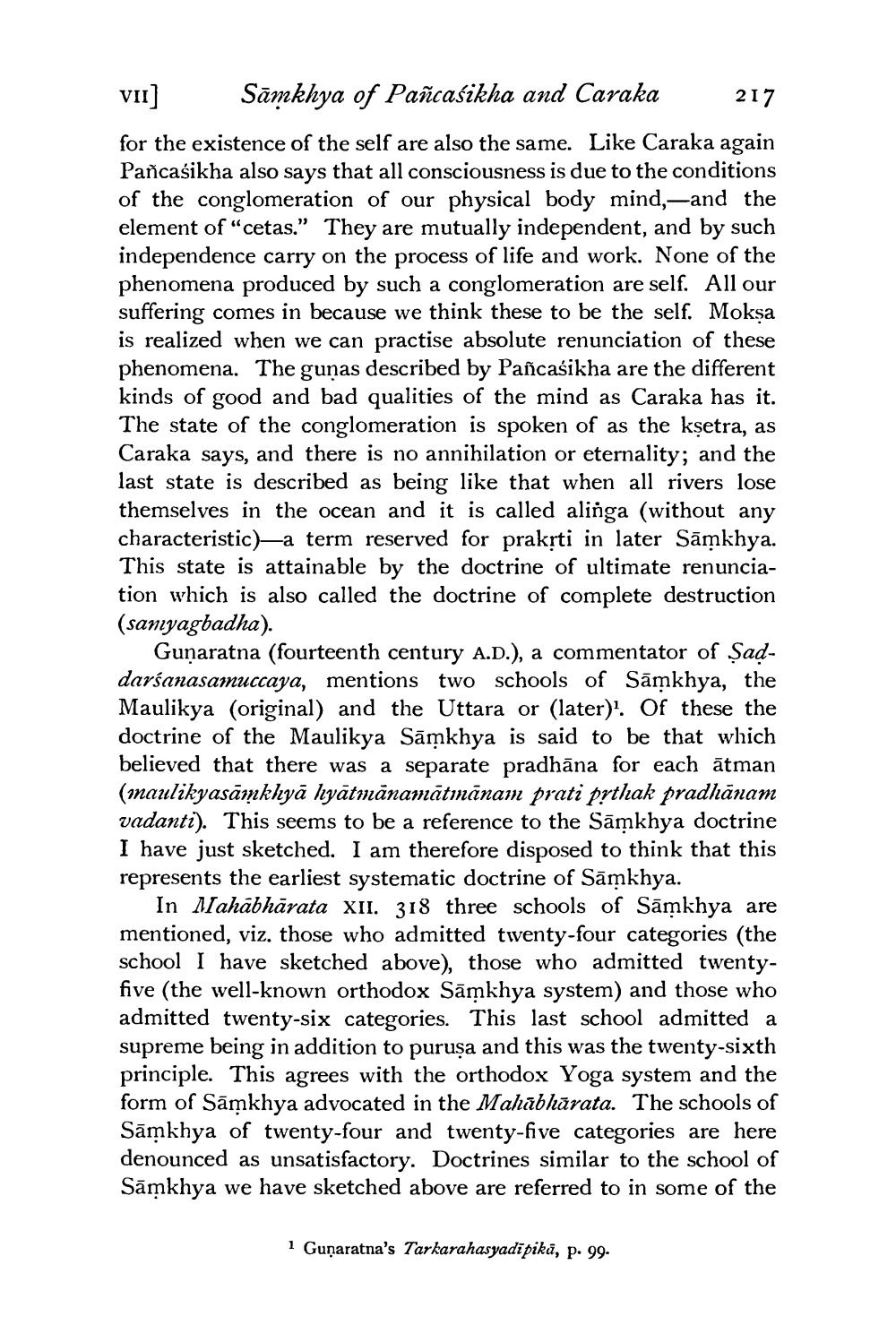________________
vii] Sāmkhya of Pañcaśikha and Caraka 217 for the existence of the self are also the same. Like Caraka again Pañcaśikha also says that all consciousness is due to the conditions of the conglomeration of our physical body mind,-and the element of "cetas." They are mutually independent, and by such independence carry on the process of life and work. None of the phenomena produced by such a conglomeration are self. All our suffering comes in because we think these to be the self. Moksa is realized when we can practise absolute renunciation of these phenomena. The gunas described by Pañcaśikha are the different kinds of good and bad qualities of the mind as Caraka has it. The state of the conglomeration is spoken of as the kşetra, as Caraka says, and there is no annihilation or eternality; and the last state is described as being like that when all rivers lose themselves in the ocean and it is called alinga (without any characteristic)—a term reserved for prakrti in later Sāmkhya. This state is attainable by the doctrine of ultimate renunciation which is also called the doctrine of complete destruction (sanyagbadha).
Gunaratna (fourteenth century A.D.), a commentator of Şaddarśanasamuccaya, mentions two schools of Sāmkhya, the Maulikya (original) and the Uttara or (later)'. Of these the doctrine of the Maulikya Sāmkhya is said to be that which believed that there was a separate pradhāna for each ātman (inaulikyasainkhyā liyātmānamātinānam prati prthak pradhānam vadanti). This seems to be a reference to the Sāmkhya doctrine I have just sketched. I am therefore disposed to think that this represents the earliest systematic doctrine of Sāmkhya.
In Mahābhārata XII. 318 three schools of Sāmkhya are mentioned, viz. those who admitted twenty-four categories (the school I have sketched above), those who admitted twentyfive (the well-known orthodox Sāmkhya system) and those who admitted twenty-six categories. This last school admitted a supreme being in addition to purusa and this was the twenty-sixth principle. This agrees with the orthodox Yoga system and the form of Sāmkhya advocated in the Mahābhārata. The schools of Sāmkhya of twenty-four and twenty-five categories are here denounced as unsatisfactory. Doctrines similar to the school of Sāmkhya we have sketched above are referred to in some of the
i Gunaratna's Tarkarahasyadīpikā, p. 99.




